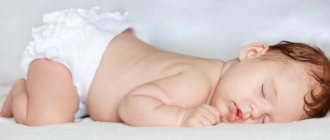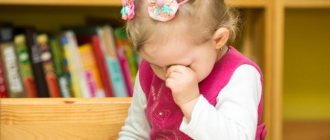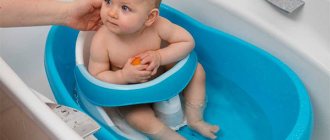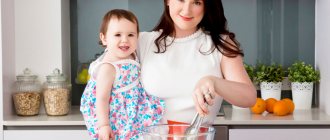When needed
What shoes are needed for babies starting to walk, when exactly to buy them - these questions often worry young mothers who care about the health of their beloved baby. Even experts cannot give a definite answer to this question. Some pediatricians believe that babies need their first shoes when they just begin to stand on their feet. Other experts assure that you can postpone their purchase until the baby starts walking.
According to Dr. E. Komarovsky, a baby can put on his first shoes at 4-5 months. The main function of such shoes is to warm the baby's feet. For small children who do not even try to take their first steps, orthopedists advise choosing any model of boots or booties, since they are only decorative and allow the lower extremities to remain warm. You can wear terry socks on your feet, which will also provide reliable protection from the cold.
A baby needs shoes when he begins to walk confidently and can not only take several steps in one direction, but also return back. It will help the child avoid injuries - cuts, punctures. But this does not mean that he should wear boots all the time. It is necessary to put shoes on the baby during outdoor games and walks to support the fragile foot.
First booties
Light boots
Soft-soled shoes
Many parents are looking for soft-soled shoes as their baby's first shoes.
Popular brands here include:
Robeez Pediped Stride Rite prewalkers Umi Preschoolians crawlers
Lacoste Jack and Lily (baby leather shoes) IsaBooties
Nina Kids
When your baby is just starting to walk around the house, it is not necessary to put shoes on him: at this moment, soft socks or tights with non-slip soles are better suited.
If your baby is wearing decorative booties, take them off every time your baby tries to walk.
Requirements for first shoes
When choosing your baby's first shoes, you need to consider some important points. According to Dr. Komarovsky and other pediatricians, shoes for small children should be comfortable. Its task is to help cope with minor problems in the formation of feet. You need to pay close attention to the following points:
- The baby's shoes should be chosen according to the weather. Boots or shoes are suitable for walking in the rain, shoes - for a dry, warm day.
- It is necessary to have a small heel with a height of 5-15 mm to provide the child with stability. In addition, it prevents the development of flat feet.
- It is important to pay attention to such a nuance as the shape of the product. It is better to choose a pair that sits loosely on the child’s legs and does not squeeze them. It is not recommended to purchase models with pointed and tapered toes and too high heels.
- The material must be natural. Suede, leather or nubuck shoes are suitable, which will allow the child’s feet to breathe. For winter, it is better to choose boots insulated with sheepskin, membrane or Thinsulate. The first material is designed to be worn in cold weather. Thinsulate is much cheaper, and most importantly, the baby’s feet will not be able to freeze in such shoes, because they are warm. Orthopedists recommend wearing membrane boots in wet weather. Such shoes do not allow water to pass through, so your baby can splash through puddles without fear of getting wet.
- The sole must be flexible. If you choose the first shoes for a child with a hard variety, then the baby will feel uncomfortable walking in them.
- The backrest that secures the leg must be rigid.
- You should choose shoes that have cushioning. If you ignore this important detail, the baby’s joints may become deformed, because he does not sit still, but actively moves.
- Shoes for babies should have arch support and an insole made of breathable materials.
- Fasteners are important. Children can unfasten boots or shoes on their own if they are secured with Velcro.
- Shoes for little ones should not be purchased for growth. You should choose boots and shoes with a small margin. For winter it should not exceed 1.5 cm, and for summer – 1 cm. If the reserve is very large, the child’s leg will be deformed.
- For walking, you should choose shoes that match the anatomical features and size of the child’s feet. It should not interfere with proper growth and development.
When choosing first shoes for your baby, you need to pay attention to all of the above criteria. It is better to go shopping for shoes with your child. The selected models should not only be put on the legs, it is advisable that the baby take several steps in sandals or boots. If he is comfortable, he will be happy to wear new shoes.
Weather model
Small heel
Convenient form
Natural materials
Flexible sole
Hard ass
Mandatory presence of instep support and breathable insole
Should not be purchased for growth, but only with a small reserve
Variety of models for walking
The best brands of children's shoes for the first steps
The results of the analysis of reviews on social networks allow us to conclude that among the variety of brands of children's shoes, modern Russian parents prefer the following brands:
- Russian shoes, “Kapika”, “Skorokhod”, “Totto”, “Flamingo”, “Alligasha”, “Antelope”.
- Foreign-made children's shoes: “SuperFit” (Austria); "Elefanten" (Germany), "ECCO" (Denmark), "Minimen", "Tico", "Rabbit", "Cansucan Bebe" (Turkey).
According to users, children's shoes from the above brands best meet the criteria of “quality-comfort-safety” and, at the same time, have decent aesthetic characteristics.
Does your baby need orthopedic shoes?
The range of shoes in stores is wide. Often young mothers choose orthopedic models for their beloved children. Whether this is justified in the case of children is a moot point. Many experienced mothers insist that these are the shoes that are needed. They are guided by the fact that the legs in such boots grow correctly and the joints do not become deformed.
Modern pediatricians debunk this opinion, because orthopedic models are suitable only for babies whose legs develop incorrectly. It is impossible to determine by eye whether a child under one year old needs such shoes. It is better to consult with an orthopedist who will tell you whether your baby needs to wear specialized models. The doctor will conduct research and help you choose shoes for your first steps.
You should not buy your child's first shoes from someone else. When worn, it takes the shape of the feet of its owners. You should not save money, since shoes for the first step, which have been previously used, will bring much more problems with the health of children than they will benefit.
Not everyone needs orthopedic shoes
Should you wear shoes at home?
You and I know the benefits of walking barefoot, but this statement is valid for uneven surfaces, soil, grass, sand, and so on. At home, the floors are flat and walking barefoot can cause deformation of the feet , disrupt the tone of the foot muscles and interfere with the harmonious development of the legs.
Walking on uneven surfaces , on balls, on sand is useful. Also, for the proper formation of the foot muscles, it is useful to take various objects with your fingers: pencils, balls.
How to choose the right size
Parents often try to figure out what size shoes should be by sticking a finger between the heel and the baby's foot. This method is not justified, since during the measurement the baby may curl his fingers. In this case, the size of the selected pair will be incorrect, and after a few days the child will complain that it is uncomfortable for him to walk. In addition, this will lead to health problems for the baby.
Another mistake parents make is that they start asking the child if he is comfortable. The baby understands little and may smile or nod if he likes the color of the product. But, upon arriving home, parents are faced with the fact that their children refuse to walk in the chosen sandals or shoes.
It is necessary to put shoes on the baby’s feet and let him walk around. If the pair is chosen correctly, the child’s step is confident, the baby does not stumble or fall at every step.
The formation of children's feet does not end in the first year of life. It has a large number of cartilages inside. There is a layer of fat on the baby’s feet, which reduces the degree of sensitivity. If the wrong size sandals were chosen for the first step, then the shoes will put pressure, deforming the fragile tissue. A small child sometimes does not feel this. When answering the question of how to choose shoes for your first steps, you should consider several nuances. Ossification of the foot occurs by 6-7 years. If you put on your child's first shoes too small or, conversely, too large, this will lead to deformation of the feet.
It is better to choose shoes when the child begins to walk, but only after measuring the size of the feet. To do this you need:
- Place a sheet of paper on the floor and place the baby on it with two legs. It is necessary to ensure that the child stands upright, since the correctness of the measurements directly depends on this.
- Trace the baby's legs with a pencil, holding it perpendicular to the sheet of paper.
- Using a ruler, measure the distance from the extreme point of the big toe to the middle of the heel and write down the values.
We put sheets of paper on the floor and stand the baby with two legs
We outline the foot or mark the extreme points on paper
Using a ruler, we measure the distance between the extreme points.
You can determine the size of boots for children less than a year old in another way. You need to take a string and measure the baby’s feet with it, and then, using a ruler, make the necessary measurements.
The table shows approximate children's sizes.
| Centimeters | European size | United States size |
| 9,5 | 14-15 | 0-2 |
| 10 | 15-16 | 2-3 |
| 10,5 | 16-17 | 3,5-4 |
| 11 | 18 | 4-4,5 |
| 11,5 | 18,5 | 5-5,5 |
| 12 | 19 | 5,5-6 |
You can calculate what size you need to choose for your children's first shoes yourself. To do this, you need to measure the baby’s leg according to the scheme described above, then add one to the results obtained and divide the resulting number by 0.66. For example, if the measurement results in the number 9, you should add one to it, then divide the resulting number by 0.66. It turns out 15.15. This value corresponds to sizes 15-16 according to the European system and 2-3 according to the American system.
You should know that the size of baby shoes is selected individually. For large children up to 1.5 years old, those products that other children wear only by the age of 2 years may be suitable.
Criteria for correct selection
The question arises, how to choose the first shoes for a child, what to look for when buying. Some will say that the main thing is to choose the right size. But this is not the only factor that should be taken into account. For example, shoes made from poor material can harm the health of a toddler; an irregularly shaped sole will disrupt the normal development of the child’s foot. That is why you need to approach the purchase of your first shoes wisely, and be sure to take into account all factors.
And, of course, we should not forget that shoes for toddlers should be comfortable and safe to wear.
Pay attention to the absence of protruding seams, because they can rub the baby’s leg.
Also remember that it must have the correct design so that the baby’s ankle joint and foot are well secured.
If you are buying sandals for a toddler, choose shoes with closed toes, because the child is just learning to walk and may still stumble and even fall.
Select the required size
One of the main criteria is choosing the right size . It is necessary that the length and width of the baby’s foot fully correspond to the size of the selected boot or shoe. Some parents buy shoes for growth, because the baby’s feet grow so quickly, and this is an unnecessary waste. By doing this, they only harm the baby’s health, prevent the foot from developing normally, and provoke the occurrence of deformation processes. In addition, the child will rub his feet in such shoes.
Do not listen to sellers who advise you to buy shoes that will fit right next to your baby, that is, they fit too tightly. This will also harm normal development, and will also cause terrible discomfort and possibly pain.
When you go to buy the first shoes for your toddler, follow this rule: measure the parameters of the child’s feet, add half a centimeter to them. This must be done taking into account the fact that in the hot season there is a risk of slight swelling of the leg, and in the cold season the additional space will retain heat.
Of course, it is advisable to take your child with you to try on shoes; ask your child to take a few steps in new clothes. It happens that even though the size seems appropriate at first glance, a child cannot move normally in the shoes offered.
It is important to measure both legs of a toddler; there are cases when a child’s left and right feet differed in size. If you take your toddler for fitting, be sure to try on shoes on both feet.
Sole and heel
When making a purchase, always pay attention to the sole; it should be moderately flexible, preferably grooved, but at the same time quite rigid. It is very important that suitable shoes do not have slippery soles; your baby is just starting to walk, why increase the risk of falling and possible injury.
Why is it so important to choose a flexible sole? The thing is that the shock absorption of the child’s foot depends on this part of the shoe. If the sole is flexible, normal weight transfer occurs from heel to toe when walking. If the sole does not bend, such shoes will only harm the baby.
As for the heel? It is important that in the heel area the sole has a thickening, approximately a centimeter different from the rest of the sole.
Suitable material
Try to buy shoes made from natural material so that your feet can “breathe” and do not sweat or overheat. Of course, shoes made from such materials are more expensive, especially leather ones; some parents do not consider it advisable to spend money on something that will become small in a few months. But you must remember that children at such an early age have not yet developed a thermoregulation system, and wearing shoes made of material that will cause problems, discomfort, and excess moisture in an adult will only worsen the situation. And here the choice is yours: money or the baby’s health.
We recommend reading: Panties for potty training: how to use, features
Solid high back
For the correct development of the foot and the prevention of plano-valgus deformity and flat feet in the future, correct placement of the heel and fixation of the ankle joint is important. That is why it is not recommended to wear shoes with a soft back or without a back that do not secure the ankle joint.
Do not buy flip-flops, house slippers, sandals with a strap on the heel, or winter shoes without a hard back for your children. Shoes for children under 3 years of age must have a hard heel.
Waterproof and breathable material
For the first shoes, the materials from which the shoes are made are important. The CORE-TEX technology in Primigi shoes allows the shoe to be both waterproof and breathable .
This is a special membrane with 1.4 billion pores per 1 square centimeter, which is located between the lining and the top layer of the shoe. Pores are 20,000 times smaller than water molecules, but 700 times larger than water vapor molecules. This is why water cannot get inside, and sweat comes out easily.
And Primigi CORE-TEX SURROUND technology provides an open sole structure, making the shoe completely waterproof and breathable. This is especially important during seasons when the weather often changes from sunny to rainy and vice versa.
Safety
Natural materials, no nickel in metal elements, no chromium in the inner lining material.
Shoes come into close contact with the baby's skin through a thin sock; in warm and humid conditions, harmful substances can get on the baby's skin. The naturalness of materials for shoes is not subject to discussion: genuine leather and textiles are traditionally considered the best materials for children's shoes.
The lining material should not contain chromium , which can cause irritation to the skin of the feet. Many children have an allergic reaction to fastener elements and decorative elements containing nickel.
The main criteria for the right shoes: flexibility, lightness, breathability, strength, softness - the principles of the Primigi system.
Ergonomic shape: free front part, fullness adjustable
A child's foot is characterized by a narrow heel and a wide forefoot. For a comfortable feeling and proper development of the foot, it is important that the front part of the foot is not compressed and the baby can move his toes freely.
Pay attention to the ergonomic shape of the baby's shoes. The fullness of children's feet can vary significantly, so shoes must be able to be adjusted in fullness: Velcro, laces and buckles allow you to adapt the shoes.
Inner sole shock absorber
The baby's feet encounter uneven ground, micro-collisions that occur when jumping and walking can be absorbed by the internal shock absorber of the Anti-Shock sole. Anti-shock is an air space in the sole that cushions and eliminates microshocks , protecting the baby’s foot.
Quality
Of course, when purchasing shoes, you can hear from the seller what a good pair it is, of the highest quality. It's their job to praise their product. Ideally, if you ask for a product quality certificate, this is the only way you can truly be sure of the authenticity of the product.
Of course, high-quality children's shoes should include a moderately hard heel, this is important for fixing the child's heel.
Good shoes or boots should include an instep support, which looks like a tubercle located at the inner edge of the sole. Its presence is very important for the correct formation of the child’s foot. Although, now there is more and more controversy about the need for everyone to wear children's shoes with arch supports.
Shoe weight: light materials, removable insoles
The lightness of the first shoes is of paramount importance . Since the baby is just learning to take his first steps, heavy shoes can significantly complicate the learning process. A special feature of a child’s foot is quite profuse sweating; there are more than 200 sweat glands per 1 square centimeter in the foot.
It is important that the insoles are removable with the ability to dry both the insoles themselves and the shoes inside.
To dry, it is better to place a ball of paper inside; drying directly near a heat source is not recommended, as this can lead to deformation of the shoes. In Primigi shoes, lightweight removable insoles are made using SKY EFFECT SYSTEM technology and covered with leather, which gives the child a feeling of natural comfort.
Do you need an instep support in your first shoe?
Many mothers have the opinion that for the first shoes it is extremely important to have an instep or arch support to prevent the formation of a flat foot. As we wrote above, in children the role of a shock absorber is performed by a fat pad , which fills the arch and protects the child’s foot from stress.
The presence of an instep support in the first shoe helps to erase the fat pad and weaken the protection of the foot . Exception: recommendations of an orthopedist for serious signs of pathology of the child’s foot formation.
The second important fact is that the arch support must be located in a strictly defined area of the foot, otherwise it will interfere with the blood circulation of the foot and cause discomfort in the child.
Therefore, it is worth talking about individually selected shoes or special orthopedic insoles; the correct location of the instep support should be adjusted by an orthopedist every 3-4 months.
How many pairs are needed
Some pediatricians and orthopedists believe that a child needs to have several pairs of shoes. Others say it's unnecessary. The main requirement for such shoes is that they should be comfortable. It would be better to have one high-quality pair for each weather, that is, two for different seasons. For the summer, you can buy one open sandals to wear in the heat. They should fit tightly around the leg and prevent the joint from moving to one side or the other. In this case, the legs develop correctly. For rainy weather, it is better to choose leather boots. The fasteners on them should not be complicated - this is necessary for the baby to learn to put on shoes. You should not buy winter boots in the summer, as your baby's feet will grow in a few months.
How does a child's foot develop?
Before walking, a child's foot does not perform any special functions. It is a bone-fat pad without arches and large muscles. The formation of arches and stability of the feet is activated only with the beginning of walking - on average, after a year of life.
Until the age of 4 years, the vast majority of children have the so-called elastic flat-valgus foot. Simply put, flat feet and heel valgus up to a certain age can be a normal option. However, in order for the foot to take on an “adult” appearance in time, a number of conditions must be met.
What is needed for the correct formation of children's legs?
We live far from the conditions for which our feet were created. Until now, there have not been and will not be mechanisms that would adapt a child’s foot to walking in shoes or constantly moving on flat and hard surfaces (floor, asphalt, etc.). However, we are able to adapt the environment as much as possible to the needs of our feet.
In order for a child’s legs to form correctly, as intended by nature, there is no need to move to a forest or desert. A healthy musculoskeletal system develops well in urban conditions. Pay attention to just two aspects of foot health:
- The foot needs regular stimulation. There are almost no perfectly flat surfaces in nature: the relief is represented by soil, roots, stones, etc. Massage mats and shoe insoles help to recreate the conditions for natural stimulation of the foot.
- The foot needs sufficient mobility. We are designed to walk barefoot. Make sure that your child does not purchase shoes that are too high and restrict movement unless indicated. It is best if the ankle movements in the shoes are free.
What are the dangers of making the wrong choice?
Pediatrician Evgeny Komarovsky does not recommend wearing orthopedic shoes for children who do not have problems in the development of their legs. Such products are dangerous, since their mandatory element is a special instep support. If the shoes are chosen incorrectly, then over time it will shift. It will begin to put pressure on the fragile bones, and this, in turn, will deform the gait. It is better to choose products with tight backs and comfortable fasteners.
When choosing shoes for a child, you should keep in mind that the baby’s thermoregulation is unstable, so it is extremely important to purchase products made from natural materials. It is better to give preference to leather models. The baby's leg will be securely fixed in them, and he will quickly learn to walk correctly. Shoes should not be made from soft textile fabrics, as such products may stretch after some time. This will lead to instability of the joint and problems in the development of the child, which will be difficult to correct in the future.
The wrong choice of shoes can lead to foot deformation
Orthopedic shoes
What types of children's shoes are there?
First of all, what kind of shoes are called orthopedic:
Orthopedic shoes, according to GOST 23251-83, are shoes whose design is designed taking into account pathological abnormalities in the foot, lower leg or thigh.
Based on this definition, think for yourself: does a healthy child need “orthopedic” shoes? Should proper children's shoes be orthopedic? In my opinion, no. What do you think?
But there is such confusion on this issue that often orthopedic salons and pharmacies sell the correct children's shoes, which are called orthopedic. But in essence, these are preventative shoes.
Preventive shoes are shoes whose design is designed to prevent pathological abnormalities in the foot.
This definition is given by the very famous Albrecht Institute in St. Petersburg, which I mentioned above, which deals with issues of foot orthotics.
So, “orthopedic” shoes for children are divided into preventive and therapeutic.
We recommend reading: Shapewear after childbirth: which one is better to choose, reviews
Popular manufacturers
Having learned how to choose your baby’s first shoes for comfortable wear, you should carefully consider the manufacturer. Beautiful products from advertised brands are not always good for children. That is why you should pay attention to the quality and compliance of the selected product with all the criteria.
The rating of shoe manufacturing companies for first steps is headed by the Russian brand “Kotofey”. The company's products belong to the middle price category. They are made from natural materials and meet established European standards. The advantages of Kotofey shoes include a wide range and high quality.
In second place is the domestic company Kapika. The manufacturer offers a whole line of shoes for babies taking their first steps - from booties and sandals to street models. The prices are inexpensive and quite consistent with the quality. All shoes are wear-resistant and durable.
The third place is occupied by the Turkish company Minimen, specializing in orthopedic children's shoes, which are made from natural materials. Prices for products are affordable and not overpriced. These models do not have hard internal seams that cause discomfort to the baby.
Kotofey
Kapika
Minimen
Fullness and instep of children's boots
Clothes sizes for newborns
The fullness of a shoe is the circumference of the foot at its widest point. Manufacturers often do not indicate this parameter on boots. If completeness is not specified, it is assumed that it corresponds to the average value. But shoes for children are often equipped with laces and fasteners. With the help of these accessories, parents can easily adjust shoes and sandals to fit small feet. Some companies specialize in the production of boots of a certain width, for example, narrow, normal, wide.
We recommend reading: Which wheels are better for a stroller: inflatable, rubber and gel: pros and cons
The fullness of a child's foot can be measured at its widest part
Advice. The instep is the transition of the lower leg to the top of the foot. This value is rarely written on children's shoes. In order for the shoe model to suit the height of your baby’s legs, you need to choose it together with him.
Photo
How to care for winter shoes
To ensure that children's shoes do not lose their properties throughout their entire service life, they need to be properly cared for.
GENUINE LEATHER
The skin can be cleaned from dirt with a damp cloth. After drying, apply cream. When the cream is absorbed, you need to remove its excess and then polish it to a shine.
ZAMASHA, NUBUCK
A special brush is used to clean products made from fleecy material. After removing the dirt, a protective spray is applied to the shoes.
TEXTILE
Textiles are not easy to clean. If there is heavy soiling, sneakers or sneakers can be washed in a machine on a special cycle.
It is not recommended to dry any shoes near heating devices. It is better to wait for it to dry naturally - in the air.
Backdrops
Some people prefer low backs, believing that they do not hinder movement. Right. But they don’t help with formation either. On the contrary, they contribute to improper development. How? You know that now the leg is actively developing and growing. Therefore, when moving, clear fixation is required in order to obtain not only a formed foot, but also to eliminate the possibility of twisting of fragile ligaments and muscles.
Ideally, the butt should be slightly higher than the ankle. This way the ankle will be securely fixed, and movements will not be a burden for the little pedestrian. Remember, you need a secure fit.
At the same time, follow the rule: the backdrop itself must be rigid. And its top is soft so as not to rub the delicate skin.











